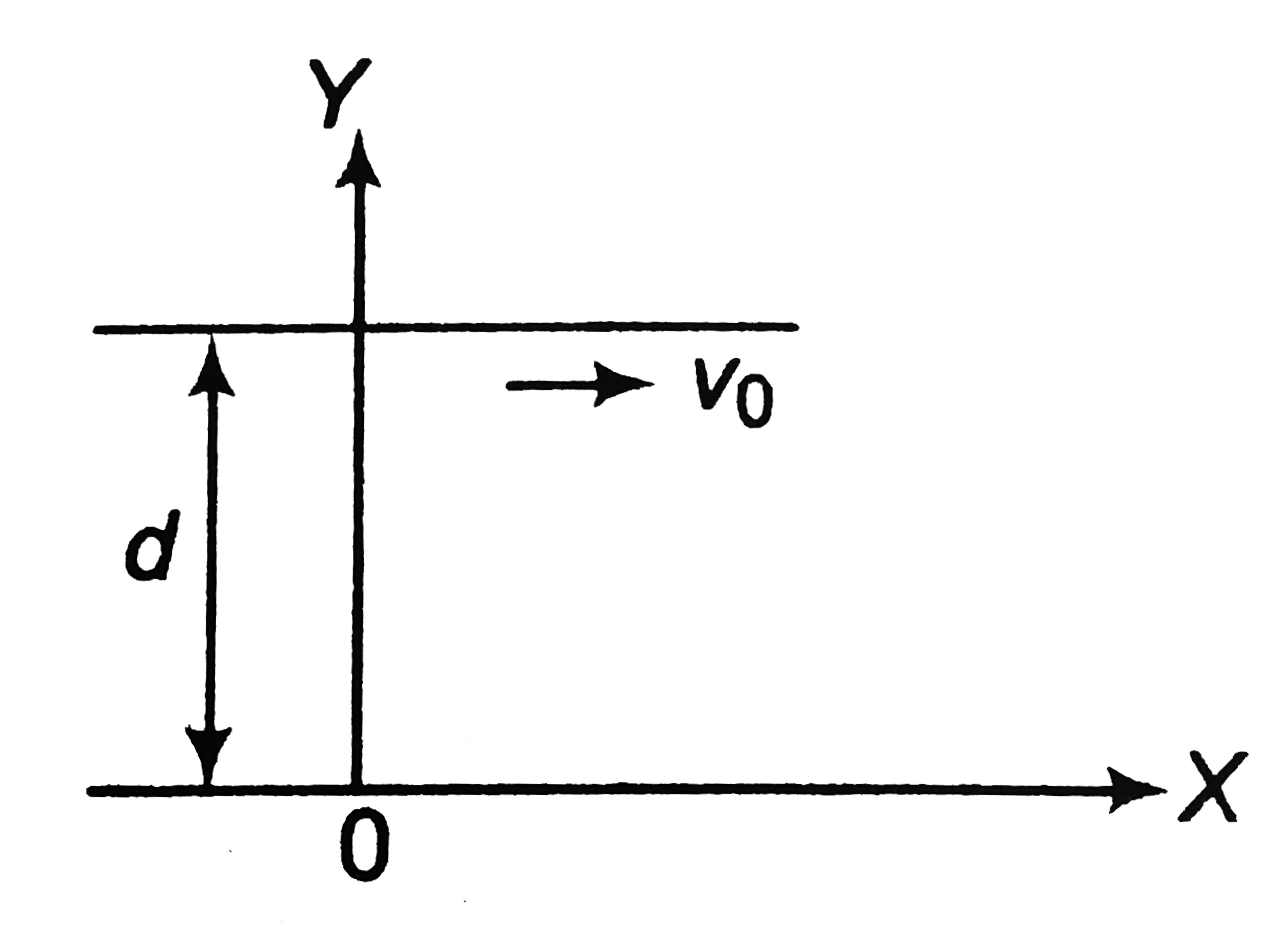If speed of water in river is 4 m/s and speed of swimmer with respect to water is 3 m/s, then in which direction the swimmer must swim so that he will reach directly opposite end?
127∘ with direction of river flow
60∘ with direction of river flow
143∘ with direction of river flow
Swimmer will never reach directly opposite end
The correct Answer is:D
To solve the problem of determining the direction a swimmer must swim in order to reach the directly opposite bank of a river, we can follow these steps:
Step 1: Understand the Given Information
- Speed of water in the river (V_r) = 4 m/s
- Speed of swimmer with respect to water (V_s) = 3 m/s
Step 2: Analyze the Situation
The swimmer is trying to swim directly across the river. However, the current of the river will push the swimmer downstream. To reach the opposite bank directly, the swimmer must swim at an angle upstream against the current.
Step 3: Set Up the Velocity Components
Let’s denote:
- The angle at which the swimmer swims upstream as θ.
- The component of the swimmer's velocity across the river (perpendicular to the current) is V_s * cos(θ).
- The component of the swimmer's velocity against the current (parallel to the current) is V_s * sin(θ).
Step 4: Establish the Condition for Reaching Directly Opposite
For the swimmer to reach the directly opposite point, the upstream component of the swimmer's velocity must equal the speed of the current:
Vs⋅sin(θ)=Vr
Step 5: Substitute the Known Values
Substituting the known values into the equation:
3⋅sin(θ)=4
Step 6: Solve for sin(θ)
Rearranging the equation gives:
sin(θ)=43
Step 7: Analyze the Result
Since the value of sin(θ) cannot exceed 1, this indicates that there is no angle θ that satisfies this condition. Therefore, the swimmer cannot swim at a speed that allows him to reach the directly opposite bank.
Conclusion
The swimmer will never reach the directly opposite bank of the river because his speed with respect to the water is less than the speed of the water current.
Final Answer
The swimmer will never reach directly opposite.
---
- Speed of water in the river (V_r) = 4 m/s
- Speed of swimmer with respect to water (V_s) = 3 m/s
The swimmer is trying to swim directly across the river. However, the current of the river will push the swimmer downstream. To reach the opposite bank directly, the swimmer must swim at an angle upstream against the current.
Let’s denote:
- The angle at which the swimmer swims upstream as θ.
- The component of the swimmer's velocity across the river (perpendicular to the current) is V_s * cos(θ).
- The component of the swimmer's velocity against the current (parallel to the current) is V_s * sin(θ).
For the swimmer to reach the directly opposite point, the upstream component of the swimmer's velocity must equal the speed of the current:
Vs⋅sin(θ)=Vr
Substituting the known values into the equation:
3⋅sin(θ)=4
Rearranging the equation gives:
sin(θ)=43
Since the value of sin(θ) cannot exceed 1, this indicates that there is no angle θ that satisfies this condition. Therefore, the swimmer cannot swim at a speed that allows him to reach the directly opposite bank.
The swimmer will never reach the directly opposite bank of the river because his speed with respect to the water is less than the speed of the water current.
The swimmer will never reach directly opposite.
Topper's Solved these Questions
- MOTION IN STRAIGHT LINEBOOK - AAKASH INSTITUTE ENGLISHCHAPTER - MOTION IN STRAIGHT LINEEXERCISE - Assignment (SECTION - C)
7 Videos
- MOTION IN STRAIGHT LINEBOOK - AAKASH INSTITUTE ENGLISHCHAPTER - MOTION IN STRAIGHT LINEEXERCISE - Assignment (SECTION - D)
24 Videos
- MOTION IN STRAIGHT LINEBOOK - AAKASH INSTITUTE ENGLISHCHAPTER - MOTION IN STRAIGHT LINEEXERCISE - Assignment (SECTION - A)
50 Videos
- MOTION IN A STRAIGHT LINEBOOK - AAKASH INSTITUTE ENGLISHCHAPTER - MOTION IN A STRAIGHT LINEEXERCISE - ASSIGNMENT (SECTION - D)
15 Videos
- MOVING CHARGE AND MAGNESIUMBOOK - AAKASH INSTITUTE ENGLISHCHAPTER - MOVING CHARGE AND MAGNESIUMEXERCISE - SECTION D
16 Videos
Similar Questions
A swimmer wants to cross a 200 m wide river which is flowing at a speed of 2 m/s. the velocity of the swimmer with respect to the river is 1 m/s. how far from the point directly opposite to the starting point does the swimmer reach the opposite bank ?
View SolutionVelocity of the boat with respect to river is 10m/s. From point A it is steered in the direction shown. Where will it reach on the opposite bank ?

View SolutionA person reaches on a point directly opposite on the other bank of a river.The velocity of the water in the river is 4m/sand the velocity of the person in still water is 5m/s.If the width of the river is 84.6m, time taken to cross the river in seconds is
View SolutionThe speed of a swimmer in still water is 20 m//s. The speed of river water of river water is 10 m//s and due east. If he is standing on the south bank and wishes to cross the river along the shortest path the angle at which he should make his stroke w.r.t. noth is given by :-
View SolutionThe stream of a river is flowing with a speed of 2km/h. A swimmer can swim at a speed of 4km/h. What should be the direction of the swimmer with respect to the flow of the river ot cross the river straight ?
View SolutionThe speed of water is double that of swimmer's velocity relative to water ?What should be the direction of the swimmer so as to express minimum displacement assuming vm=5m/sec ?
View SolutionA river 500m wide is flowing at a rate of 4m/s. A boat is sailing at a velocity of 10m/s with respect to the water, in a direction perpendicular to the river. The time taken by the boat to reach the opposite bank
View SolutionVelocity of the river with respect to ground is given by v0. Width of the river is d. A swimmer swims (with respect to water) perpendicular to the current with acceleration a=2t (where t is time) starting from rest from the origin O at t=0. The equation of trajectory of the path followed by the swimmer is

View SolutionIf the speed of light in air is 3×108 m/s, and the refractive index of water is 1.33, find the speed of light in water.
View SolutionIf speed of sound in air is 340 m/s and in water is 1480 m/s.If frequency of sound is 1000 kHz, then find wavelength in water
View Solution
